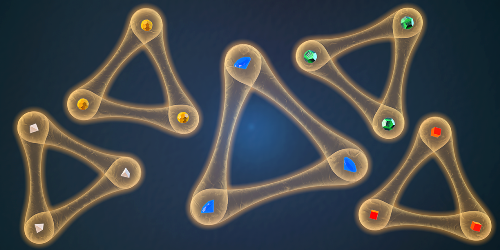Three-Body Interactions, Not So Universal After All
The Efimov effect is an exotic quantum phenomenon in which three interacting bodies form a weakly bound triad. Researchers have observed this effect in ultracold atoms, where the Efimov bound states seem to have the same universal size and energy structure for any chosen atomic species. However, a new study by Roman Chapurin from JILA, Colorado, and colleagues reports the first compelling evidence of departure from this so-called van der Waals universality: the researchers observed Efimov trimers whose sizes differ from the expected universal value. They also develop a new model of three-body physics that accounts for the nonuniversal behavior.
In the 1970s, Vitaly Efimov predicted that a strong two-body interaction can mediate three-body attraction to form bound states (trimers) even when the two-body bound state cannot form. In fact, there is an infinite number of Efimov trimers, whose energies and sizes are all related by a scaling factor. Theory suggests and experiments have shown that the size of the smallest Efimov trimer in atomic systems is universal and roughly 9 times the van der Waals radius, which characterizes the electrostatic potential between atoms. This universality implies that the three-body bound states are independent of short-range two-body interactions.
In their spectroscopy experiments, Chapurin and colleagues measured two- and three-body interactions in ultracold potassium atoms. They obtained the most precise measurement yet of the Efimov ground-state size, finding it 50% larger than the universal value. To explain this discrepancy, the researchers developed a refined theoretical model, which suggests that microscopic details such as complex two-body spin interactions can cause the expected universality to break down.
This research is published in Physical Review Letters.
–Harini Barath
Harini Barath is a freelance science writer in Hanover, New Hampshire.





